Since the brush can be wet or dry and the page can be wet or dry, we have a few obvious combinations that result from this.
Wet brush on dry page.
Wet brush on wet page.
Dry brush on dry page.
Dry brush on wet page.
Wet On Wet
It's worth experimenting with all of them, but here are some wet on wet examples.
Here I made a dab that soak into the paper, then I ran a smoother black line into it (downward). So you can see how the line starts to spread as soon as it touches the wet page.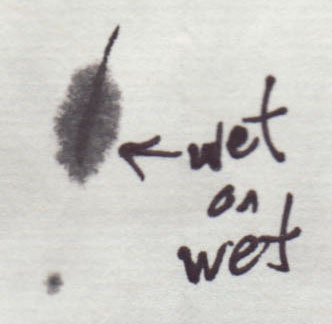
in the next one, I again had some wet ink on the page, and this time made a dot or dab into it. When completely contained in the wet area, it makes a nice starburst dot. But when done on the edge of the wet area, it will flow right passed the boundaries of the original stroke.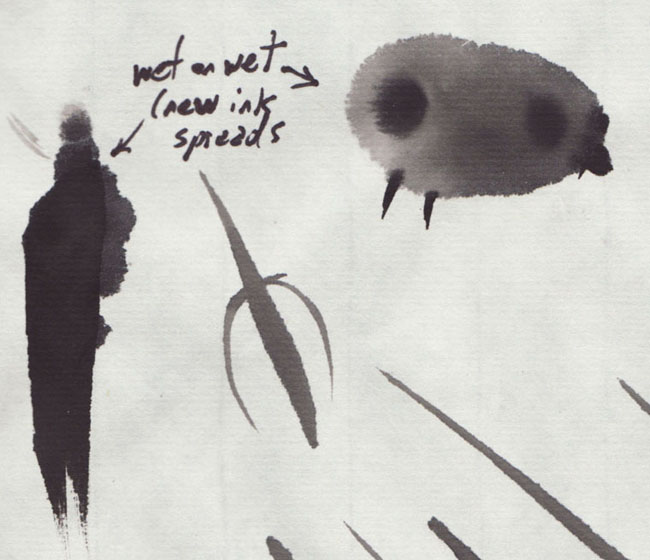
but even though the new wet ink will flow passed the boundaries of the stroke before it, it tends to flow to the wet area first. In this next example, I made an "S" with JUST WATER, then touched an ink brush to either end to see how the ink flows down the path that's already been laid out for it.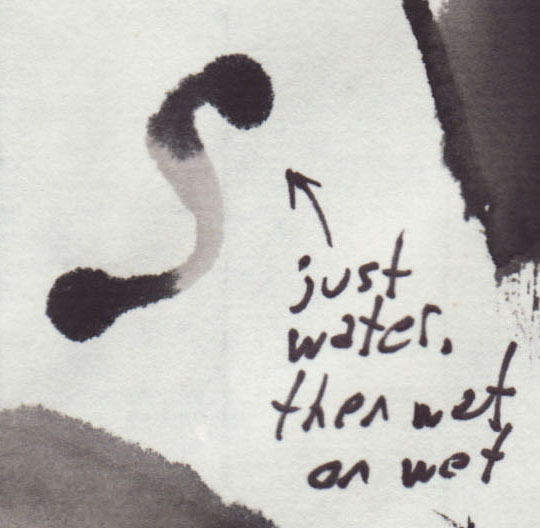
Speed Kills Spreading!
This is really useful. If you have a wet brush and you make your strokes faster, then the paper doesn't have enough time to absorb the ink –therefore it does NOT spread.
Vary of Speed
So naturally, if you vary the speed of the stroke, you'll vary the amount of ink the paper can absorb and thus vary the thickness of the line. This example was made with a CONSTANT pressure. I know it's obvious that changing pressure on the brush will give you a thicker line, but this was NOT the case (that's why it's so interesting).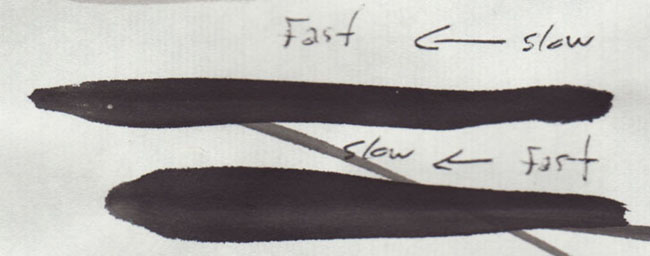
so again, above is constant pressure, varying speed.
Fast with Vary of pressure
And so you can see the difference, below is varying pressure, but constant fast speed.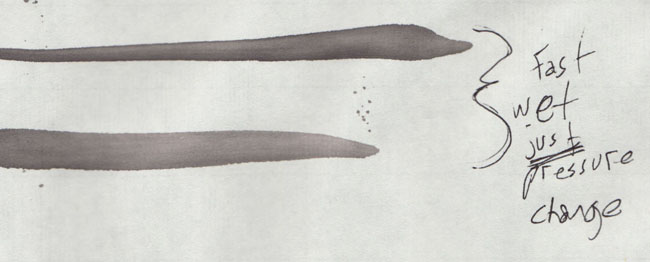
note how this one has crisp edges the whole way through, while the previous method gives us a fuzzy edge in the wider part of the line.
I'm sure each has it's uses. I used the change in speed to make this feather/quill
I'm guessing I should have gone a little slower at the bottom to let it get even fuzzier, but you get the idea.
Wet on dry
I don't have a picture to go with this, but if you make a stroke and then let it dry before making another stroke on top of it, the second stroke should effect the first as if it were effecting the dry page. So a fast stroke on a dry stroke should not bleed, while a slow stroke on a dry stroke should start to spread like normal.
--but I'll have to double check this last one the next time I have the inks out.
Friday, January 25, 2008
Chinese Brush: Wet On Wet
Posted by Danny at 4:09 PM





 Labels:
ChineseBrush,
Technique
Labels:
ChineseBrush,
Technique
Subscribe to:
Post Comments (Atom)












No comments:
Post a Comment